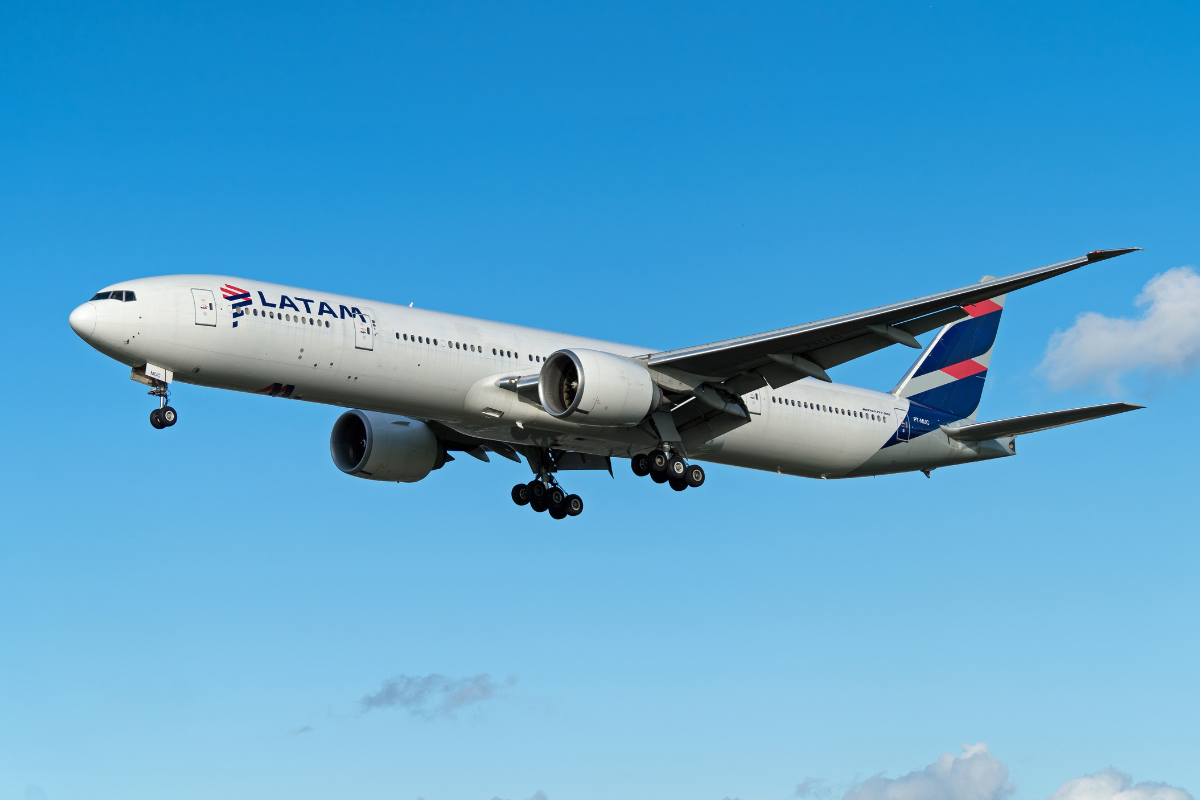
The pilots of a LATAM Boeing 777-300 which suffered an extreme tailstrike as it was departing off from Milan Malpensa Airport last month apparently input the wrong figures into the onboard computer, causing the plane to try to takeoff at the wrong speed, according to a preliminary accident report.
The accident occurred on July 9 when the 11-year-old aircraft LATAM Brasil Boeing 777 with 398 passengers and crew onboard was departing Milan Malpensa bound for Sao Paulo.
Surveillance video caught the moment the aircraft started to blow up dust and smoke as its tail dragged along the runway for around 720 meters before the airplane eventually got airborne.
Once in the air, the pilots quickly stopped the climb at around 6,000 feet and started to dump fuel before making an emergency return to Milan where the flight had to be scrapped due to the extensive damage to the airframe.
The aircraft remained on the ground for several days before LATAM was able to fly it back to Sao Paulo empty where it has remained ever since so that repairs can be carried.
While those repairs have been taking place, an accident investigation by Italy’s official air safety agency has been taking place and preliminary findings suggest that a simple error by the pilots was the cause of the accident.
In order to calculate the correct takeoff speed, pilots have to input a number of parameters into the flight management computer. In this case, it appears that the pilots entered the so-called ‘zero fuel weight’ for the aircraft, rather than the actual fuel weight which meant that the computer calculated the takeoff speed at a much lower rate of knots than was actually required.
What’s surprising about this incident is that there were actually three pilots on the flight deck at the time, including an instructor Captain who was training one of the other pilots.
The same Boeing 777 was involved in a serious emergency landing in 2018 when it suffered a severe and widespread electrical fault as it flew across the Atlantic from Sao Paulo to London Heathrow.
The electrical issue was so significant that an emergency Ram Air Turbine (RAT) was deployed to generate some electrical supply before it made an overweight landing in Belo Horizonte.
The problems were so bad on LA8084 that passengers reported all the lights and power went out in the cabin, while the pilots could not dump fuel because of the electrical issues.
Mateusz Maszczynski honed his skills as an international flight attendant at the most prominent airline in the Middle East and has been flying ever since... most recently for a well known European airline. Matt is passionate about the aviation industry and has become an expert in passenger experience and human-centric stories. Always keeping an ear close to the ground, Matt's industry insights, analysis and news coverage is frequently relied upon by some of the biggest names in journalism.







